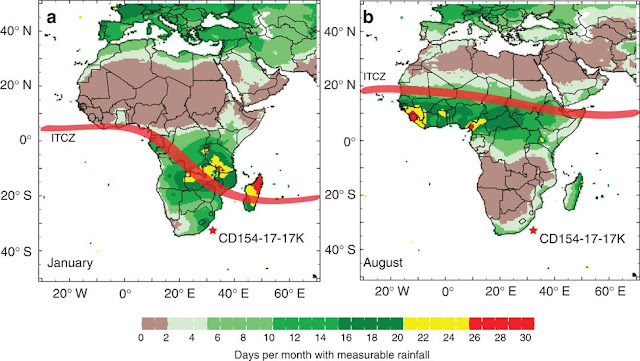The Value of Water-An Assessment of a Direct Application of Ecosystem Service Conceptions
In this blog I will develop the discussion of Wetland
Ecosystems in Africa, whilst more directly combining this with Ecosystem
Service conceptions. This will be through looking at an academic paper which
uses valuation techniques to discuss irrigation projects, showing how the
concept can be applied in an African development context. Further, it
highlights some of the limitations and counter-arguments discussed in an
earlier blog.
In ‘The Value of Water’ Barbier and Thompson combine
hydrological models and economic valuations to predict the likely opportunity
cost of upstream damming and irrigation on the downstream net benefits, within
the Hadejia-Jama'are River Basin in north-eastern Nigeria. This is particularly
interesting in light of recognition of importance of wetlands, a stance which their results support.
| Figure 1-Hadejia-Jama'are Basin |
They find that the reduction in floodplain areas from many
of these schemes lead to the loss of direct use values that local populations gain, crop production, fuelwood and fishing. They find that these often outweigh the benefits from planned or implemented irrigated agriculture upstream, with values both per hectare and per metre cubed of
water significantly less in irrigated areas than in the floodplains they reduce. For example in the Hadejia-Jama'are
wetlands net present values for above direct uses found to be around $34-51 per
Ha and $10-15 per 10m3 of floodwater, whilst in the Kano River
Irrigation Project the agricultural production benefits are only $20-31 per Ha,
or $0.03-0.04 per 10m3. This means that many of the schemes overlook
the importance of floodplain benefits, utilising the water in irrigation
schemes without the economic output of floodplain areas. This can be seen as
highlighting the usefulness of ecosystem services as a method of guiding
development policy and techniques.
However, the flaws in the paper also highlight some of
the issues in ecosystem services and their underlying logic. Firstly, its
economic valuation methodology is somewhat limited, focusing solely on direct
use values, both for the irrigation areas as well as the floodplains. This
means that a huge range of other human economic uses are not included. In the floodplain
areas aspects such as the seasonal role as pasture, scarcity mitigation and
tourism, whilst the importance of the water for drinking, sanitation and
industry are mentioned but not modeled for upstream usage. The importance of
these sources is undeniably hard to quantify. For example the impacts of water
on health are dependent on a range of factors beyond total volume provided,
such as whether piped supplies are standing pumps or in-home, individuals levels
of education and waiting times, and so perhaps can never be expect to be adequately
quantified.
Beyond this, the focus is purely on human usages of the water
resources, and overlooks the natural and environmental importance of the river.
Again, although there are brief mentions of the floodplains importance to
migratory birds, this isn’t factored into valuations, and shows the
anthropocentric focus of the valuation, as is the case with many such
valuations. Further, it also highlights the importance of complexity in these
valuations, which are often hard to achieve.
Despite these criticisms, the paper offers an important
stance in showing the need to recognise the downstream impacts of schemes. It
illustrates many of the arguments made in Schroter et al on the role ES
concepts are best placed to play, advising and guiding policy, with its
limitations accepted but nonetheless utilised to help inform decisions.


